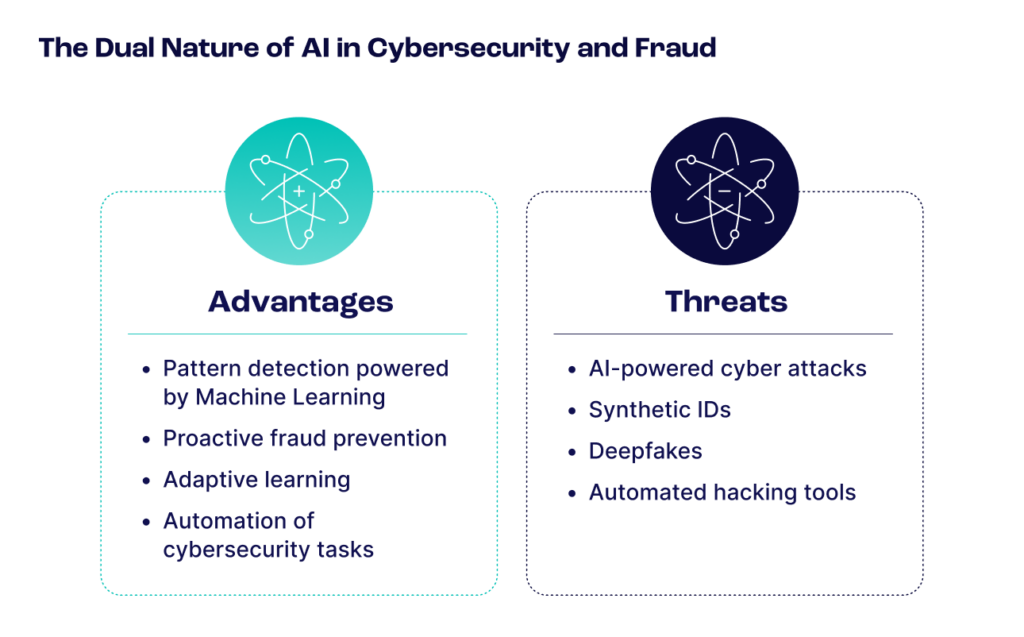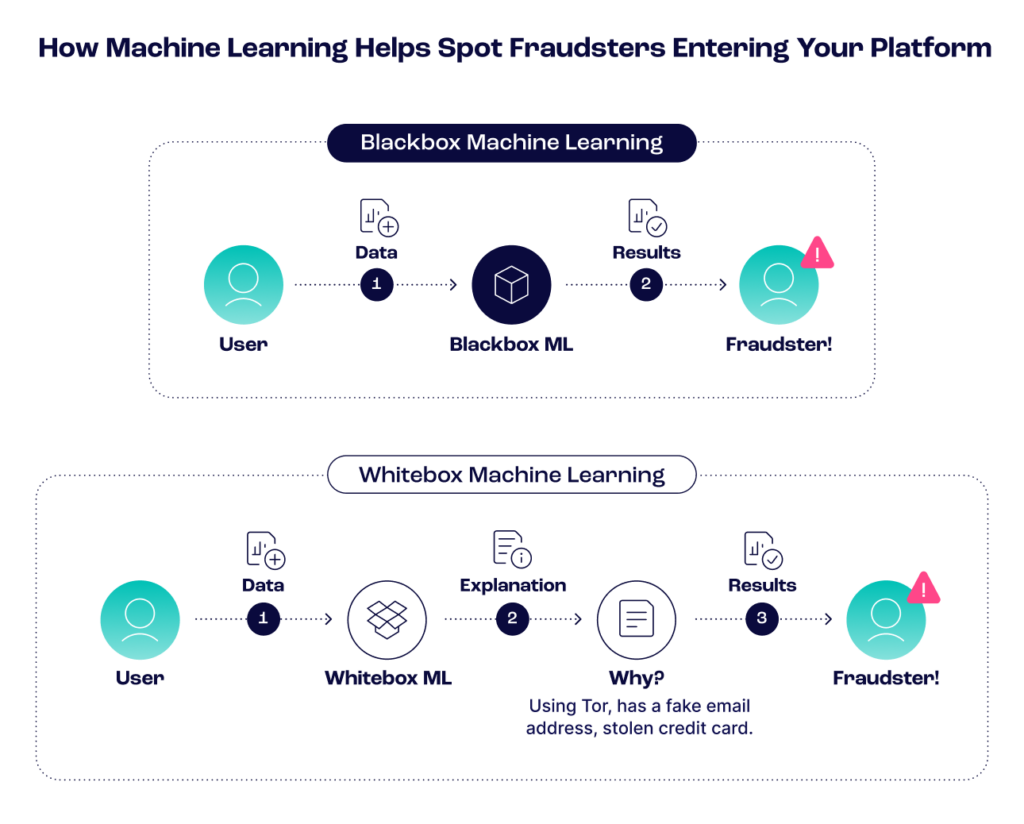We don’t know what AI will look like one year from today. The technology is advancing so rapidly that it’s impossible to anticipate what comes next, and even as we stand on the cusp of transformative change, we can’t solve the unknown variable.
Such uncertainty is unwelcome in cybersecurity and fraud. Both fields are defined by their abilities to predict, prevent and mitigate risks. The evolution of AI adds layers of complexity, presenting unprecedented opportunities and significant threats. On the one hand, AI’s capabilities enhance defense mechanisms, enabling the detection and counteraction of fraud with remarkable efficiency. On the other hand, the same technology is being weaponized by malicious actors, exponentially amplifying the speed, scale and complexity of attacks.

This delicate balance between AI’s threats and benefits is a source of growing skepticism, especially among those not deeply invested in the technology itself. As AI-driven progress continues to surge, questions arise about maintaining its progress over the long term without compromising security. How can the technology driving novel and increasingly sophisticated fraud activities be harnessed to combat scams and cyber risks cost-efficient and effectively?
The stakes are high as AI takes a more central role in fraud – used by fraudsters to carry out attacks and by companies to deploy multi-layered defense systems to catch fraud earlier in their customers’ journeys. With regular breakthroughs occurring in AI, there’s also growing interest in the potential for artificial general intelligence (AGI) to emerge in the near term. This potential evolution compounds the circumstances regarding how the technology will impact fraud and cybersecurity measures, presenting significant risks and transformative opportunities.
Advancements in AI Technology
Innovations in machine learning, natural language processing and data analytics have led to the development of sophisticated algorithms capable of analyzing vast amounts of data in real time, identifying patterns and making predictions with remarkable accuracy. These advancements have changed the way we approach cybersecurity and fraud detection. However, they have also provided hackers with powerful tools to enhance their attacks.
AI’s capabilities, like machine learning algorithms, are being trained to identify and exploit vulnerabilities, automate phishing attacks and bypass traditional security measures. AI can generate synthetic identities, create deepfakes and lead other persuasive and difficult-to-detect social engineering tactics. These advanced methods enable fraudsters to adapt countermeasures in real time, continuously evolving their strategies to stay ahead of defenses.

The use of AI in fraud is not limited to the digital space; it extends to financial crimes, money laundering, identity theft and other illicit activities. A-driven tools can analyze financial transactions, detect unusual patterns and facilitate money-laundering schemes. In identity theft, AI can create realistic fake profiles and manipulate personal information, making it challenging for traditional verification methods to identify suspicious activities.
Looking at the Emerging Threat of AGI
With the possible emergence of AGI, the future of fraud and cybersecurity could change dramatically. AGI’s ability to understand, learn and apply knowledge across various tasks could revolutionize multiple domains, including improving research, enriching customer interactions and enhancing workflow efficiencies. However, this same capability could also be exploited by fraudsters and online criminals to elevate the sophistication of their attacks to previously untenable levels.
As AGI develops, it could be used to create more advanced and adaptive fraud schemes, making it harder for traditional security measures to keep pace. The potential for AGI to learn and apply new methods autonomously poses a significant challenge for cybersecurity experts. It necessitates a proactive and forward-thinking approach to anticipating and mitigating future threats.
Discover how your business can leverage powerful, ML-enhanced fraud detection.
Learn More
The Need to Evolve Thinking
As AI technology advances, so must strategies that leverage the technology to enhance defenses. This includes developing robust frameworks for monitoring and regulating AI applications to prevent misuse. This will require collaboration between various stakeholders, including tech companies, regulatory bodies and cybersecurity experts.
Sharing knowledge, resources and best practices can help build a unified front against emerging threats and support ongoing research and development, all required undertakings to stay ahead of fraudsters and ensure that defenses are as adaptive and sophisticated as the attacks they aim to prevent.
As AI continues to dominate the spotlight, it is imperative to recognize and address its dual nature. While AI offers benefits, it also presents threats that must be carefully managed. By staying vigilant, investing in advanced AI-driven solutions and fostering collaboration among stakeholders, we can navigate the complex landscape of AI in fraud and cybersecurity.
Sources:
- 1. The Washington Post: AI’s use in political campaigns meets skepticism from voters
- 2. World Economic Forum: AI pioneers discuss breakthroughs and what’s next
- 3. McKinsey & Company: What is artificial general intelligence (AGI)?









